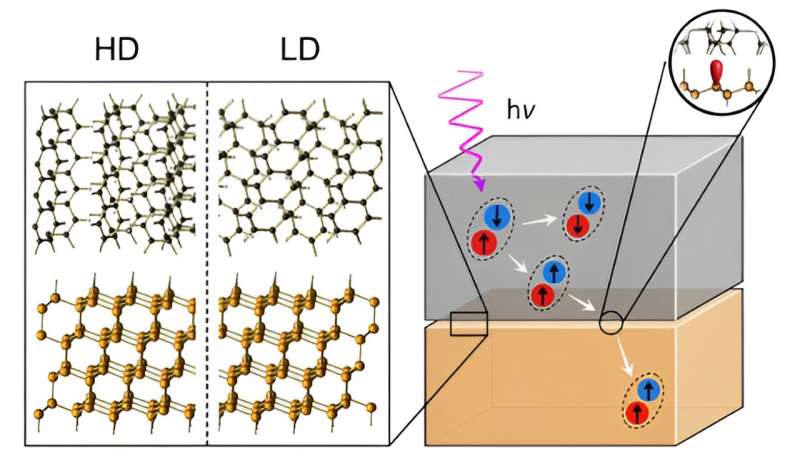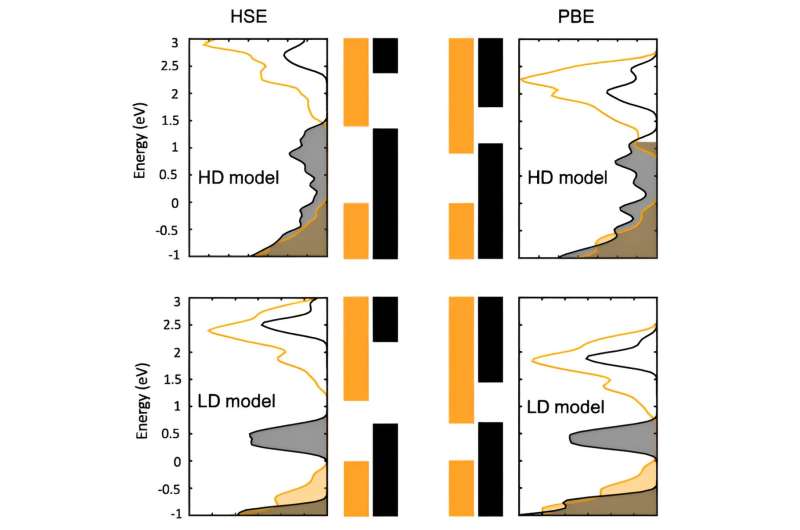This article has been reviewed according to Science X's editorial process and policies. Editors have highlighted the following attributes while ensuring the content's credibility:
fact-checked
trusted source
proofread
Physicists develop new solar cell design for better efficiency

Physicists at Paderborn University have used complex computer simulations to develop a new design for significantly more efficient solar cells than previously available. A thin layer of organic material, known as tetracene, is responsible for the increase in efficiency. The results have now been published in Physical Review Letters.
"The annual energy of solar radiation on Earth amounts to over one trillion kilowatt hours and thus exceeds the global energy demand by more than 5,000 times. Photovoltaics, i.e., the generation of electricity from sunlight, therefore offers a large and still largely untapped potential for the supply of clean and renewable energy. Silicon solar cells used for this purpose currently dominate the market, but have efficiency limits," explains Prof Dr. Wolf Gero Schmidt, physicist and Dean of the Faculty of Natural Sciences at Paderborn University. One reason for this is that some of the energy from short-wave radiation is not converted into electricity, but into unwanted heat.
Schmidt explains, "In order to increase the efficiency, the silicon solar cell can be provided with an organic layer, for example made from the semiconductor tetracene. Short-wave light is absorbed in this layer and converted into high-energy electronic excitations, so-called excitons. These excitons decay in the tetracene into two low-energy excitations. If these excitations can be successfully transferred to the silicon solar cell, they can be efficiently converted into electricity and increase the overall yield of usable energy."

Decisive breakthrough for rapid energy transfer
The excitation transfer of tetracene into silicon is being investigated by Schmidt's team using complex computer simulations at the Paderborn Center for Parallel Computing (PC2), the university's high-performance computing center. A decisive breakthrough has now been achieved: In a joint study with Dr. Marvin Krenz and Prof. Dr. Uwe Gerstmann, both from Paderborn University, the scientists have shown that special defects in the form of unsaturated chemical bonds at the interface between the tetracene film and the solar cell dramatically accelerate the exciton transfer.
Schmidt notes, "Such defects occur during the desorption of hydrogen and cause electronic interface states with fluctuating energy. These fluctuations transport the electronic excitations from the tetracene into the silicon like a lift."
Such "defects" in solar cells are actually associated with energy losses. This makes the results of the trio of physicists all the more astonishing.
"In the case of the silicon tetracene interface, the defects are essential for the rapid energy transfer. The results of our computer simulations are truly surprising. They also provide precise indications for the design of a new type of solar cell with significantly increased efficiency," Schmidt states.
More information: Marvin Krenz et al, Defect-Assisted Exciton Transfer across the Tetracene-Si(111):H Interface, Physical Review Letters (2024). DOI: 10.1103/PhysRevLett.132.076201 journals.aps.org/prl/abstract/ … ysRevLett.132.076201
Provided by Paderborn University





















